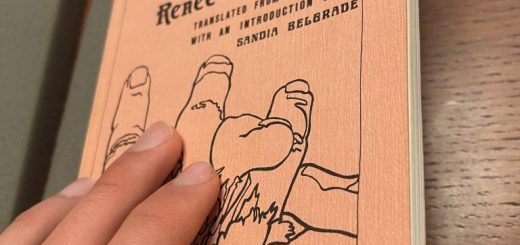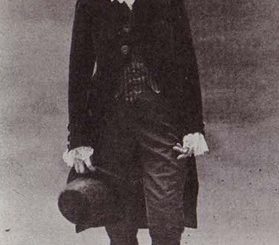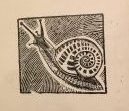Albert Camus: Speech of Acceptance Upon the Award of the Nobel Prize for Literature by Satchel K.
Albert Camus was awarded the Nobel Prize for Literature in 1957. In 1958, Knopf published an English translation of his acceptance speech. Elegantly compiled in a small and delicate paperback, the speech is presented as refined and somewhat highbrow, to be read with an eye for intellectual or philosophical messages. The content matches the form; it reads almost as a treatise on art and artistry and presents a few thoughtful and reflective ideas. Given the fact that “The Adulterous Woman” was published in 1957, I thought a comparison of themes in the two pieces might yield some interesting insights into Camus’ dominant ideas at the time. Indeed, one significant parallel between the two hints at the author’s rejection of the existentialist label as we discussed in class.
“The Adulterous Woman” follows the journey of Janine and her husband Marcel into a foreign land where Marcel hopes to further some business opportunities. Janine struggles throughout the story to reconcile her past dreams with her present reality and hints at the weak state of her marriage. The climactic scene describes an interaction between Janine (the “adulterer”) and the vastness of the world and the universe. This experience seems to empty Janine’s soul of all the folly, pain, and madness of her life, then prompts her to “recover her roots” and finally fills her with “the water of the night” (122). Camus here presents a character who, through some vivid connection with the universe, has been released from an “aimless fleeing from fear” (122). Whether the soul-matter that replaces that fear is positive or negative is unclear.
Camus’ acceptance speech furthers and expounds upon this idea. His words describe a personal connection to all of humanity, one that he feels has been exposed in new light to him by the spotlight of the award. Like Janine, Camus finds meaningful substance when confronted with something massive and in a way reflective. For Janine, this thing is the vast sky filled with stars. For Camus, it is art. Art, he says, provides “a privileged image of our common joys and woes” and in doing so “subjects him to the humblest and most universal truth… his resemblance to all” (viii). Here lies the extension of the idea put forward in “The Adulterous Woman”: the substance which fills the soul when confronted with art is the truth of human connection, “the community from which he cannot tear himself” (ix).
Inherent in this idea is a rejection of the rigid prioritization of the individual in existentialist thought. It is clear that Camus felt some meaningful connection to other humans; a sense of duty as an artist, perhaps, or simply a realization that true solitude as an individual is impossible. This kernel of thought may have informed his persistent rejection of existentialism because it requires that some themes extend beyond the individual, that there is a system in place, however indescribable or incomprehensible, which art can communicate to us. In this sense, the inspiration for Camus’ work, which has been so closely connected with existentialism, actually rejects major themes of the philosophy.
A couple interesting questions arise from this comparison. The first, brought up by a fellow student, asks for an explanation of the different reactions to Janine’s relationship with the universe and Camus’ with art: Janine’s husband cannot understand her condition when she returns from the wall, while Camus is celebrated for his interaction with art. If the parallel is maintained, one can read Marcel’s lack of understanding as Camus’ own view of his audience. Anyone can read, understand, and celebrate the substance of his art because it often reflects on the human connection, but no one can comprehend the nature of his interaction with art because it is, like Janine’s experience on the tower, such an independent journey.
The second question is similarly focused on the relationship between Janine and her husband. If Janine is seen as committing adultery in this story, who becomes the victim in the parallel story of Camus’ experience with art? This certainly complicates the idea of what exactly adultery means in “The Adulterous Woman”. Thinking through the lens of Camus and art, it could be that Janine’s adultery is an act not against Marcel, but against her own reality. Her interaction with the universe is an experience beyond the limitations that she has defined herself by up to this point. Camus can in this way be understood as seeing his interaction with art as an expansion beyond the intellectual theories like existentialism which have so defined his life in the past.








Recent Comments